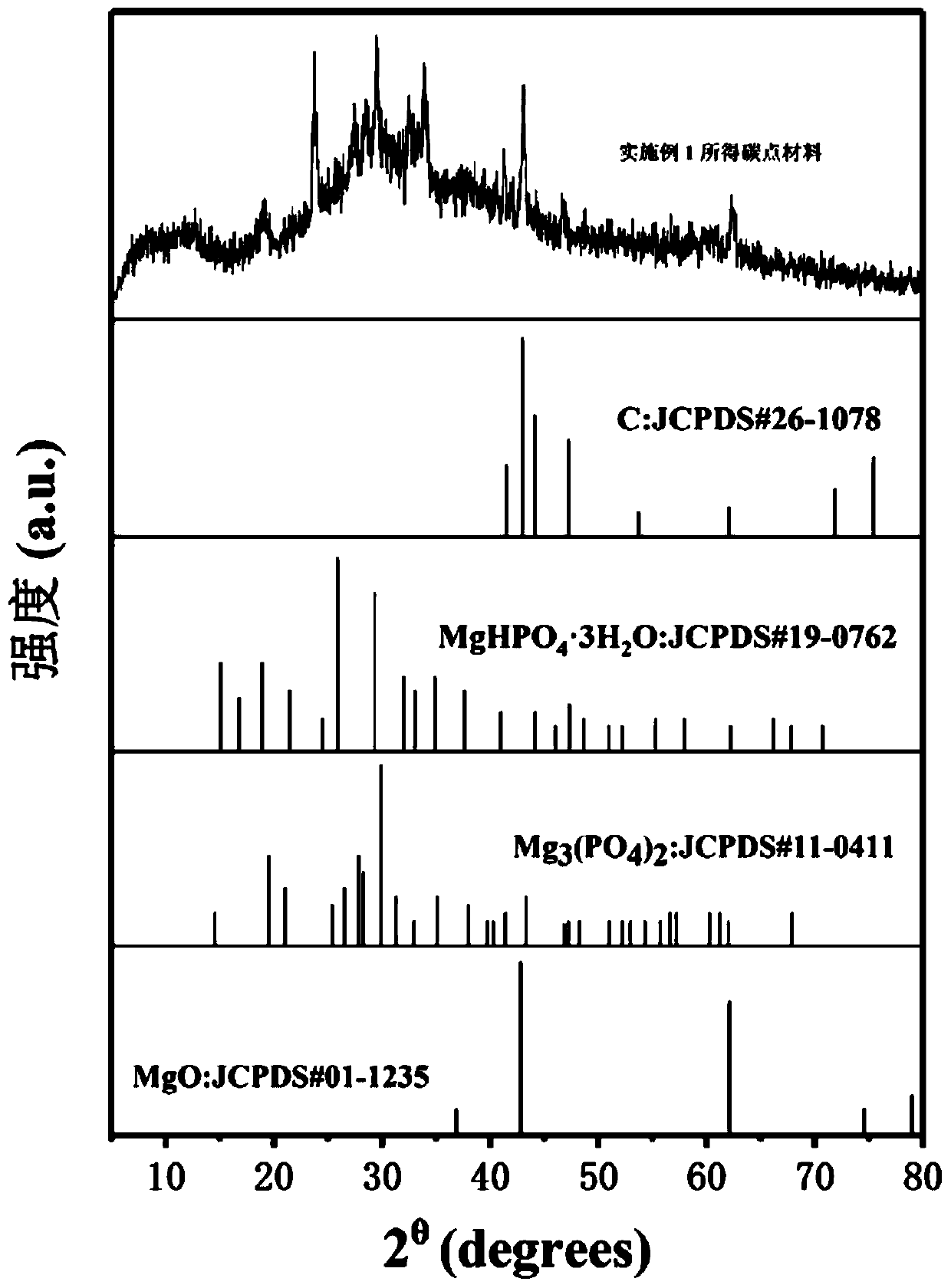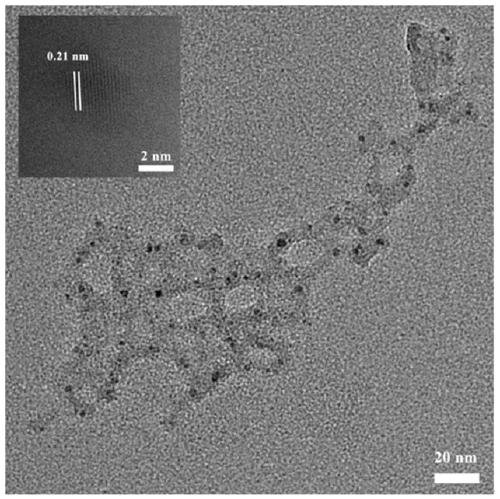Preparation method and application of water-phase room-temperature phosphorescent carbon dot material
A room-temperature phosphorescence and carbon dot technology, which is applied to luminescent materials, material analysis and application through optical means, can solve the problems of disappearance, easy sedimentation of carbon dot material particle size, and inability to effectively disperse, and achieve low cost and raw material Inexpensive, easy-to-operate effects
- Summary
- Abstract
- Description
- Claims
- Application Information
AI Technical Summary
Problems solved by technology
Method used
Image
Examples
Embodiment 1
[0045] Weigh 2g potassium nitrate (melting temperature 350℃), 0.2g magnesium chloride, 0.1g potassium dihydrogen phosphate and 0.05g carbon source 1,2,4-triaminobenzene and place them in a sample bottle, add 20ml distilled water , Stir fully for 10 minutes to obtain a uniform solution, then vacuum freeze-dry, and obtain a uniform mixed powder after grinding. Place the powder in a crucible, heat it up to 400°C at a heating rate of 10°C in a muffle furnace, and keep it at 400°C for 4 hours, then cool to room temperature, and wash with ultrapure water 3 times to remove molten salt After the substrate is dried in an oven, a carbon dot material with room temperature phosphorescence is obtained.
[0046] The morphology and structural composition of carbon dot composites were analyzed by powder X-ray diffractometer and transmission electron microscope. The result is figure 1 As shown, the XRD pattern of the carbon dot composite material shows that there may be three main components in ...
Embodiment 2
[0050] Weigh 2g of sodium nitrate (melting temperature 320℃), 0.2g of barium chloride, 0.1g of potassium dihydrogen phosphate and 0.05g of carbon source 1,2,4-triaminobenzene and place them in the sample bottle, add 20ml of distilled water, fully stirred for 10min to obtain a uniform solution, then vacuum freeze-drying, and grinding to obtain a uniform mixed powder. Place the powder in a crucible, heat it up to 350°C at a heating rate of 10°C in a muffle furnace, and keep it at 350°C for 5 hours, then cool to room temperature, wash with ultrapure water 3 times to remove molten salt After the substrate is dried in an oven, a carbon dot material with room temperature phosphorescence is obtained. The result is Picture 12 As shown, the best emission of fluorescence of the prepared material in the water phase is 498nm, and the best emission of phosphorescence is 517nm (the best excitation wavelength is 400nm). It is a white powder under a fluorescent lamp. Under a 365nm ultraviole...
Embodiment 3
[0053] Weigh 2g of potassium nitrate (melting temperature 350℃), 0.2g of strontium chloride and 0.05g of carbon source 1,2,4-triaminobenzene, place in a sample bottle, add 20ml of distilled water, and fully stir for 10min to obtain uniformity The solution is then vacuum freeze-dried, and a uniform mixed powder is obtained after grinding. Place the powder in a crucible, heat it up to 400°C at a heating rate of 10°C in a muffle furnace, and keep it at 400°C for 4 hours, then cool to room temperature, and wash with ultrapure water 3 times to remove molten salt After the substrate is dried in an oven, a carbon dot material with room temperature phosphorescence is obtained. The result is Figure 13 As shown, the best emission of fluorescence of the prepared material is 372nm, and the best emission of phosphorescence is 509nm (the best excitation wavelength is 365nm). It is a light yellow powder under a fluorescent lamp. Under a 365nm ultraviolet lamp, the obtained powder exhibits b...
PUM
| Property | Measurement | Unit |
|---|---|---|
| particle diameter | aaaaa | aaaaa |
| particle size | aaaaa | aaaaa |
| particle diameter | aaaaa | aaaaa |
Abstract
Description
Claims
Application Information
 Login to View More
Login to View More - R&D
- Intellectual Property
- Life Sciences
- Materials
- Tech Scout
- Unparalleled Data Quality
- Higher Quality Content
- 60% Fewer Hallucinations
Browse by: Latest US Patents, China's latest patents, Technical Efficacy Thesaurus, Application Domain, Technology Topic, Popular Technical Reports.
© 2025 PatSnap. All rights reserved.Legal|Privacy policy|Modern Slavery Act Transparency Statement|Sitemap|About US| Contact US: help@patsnap.com



